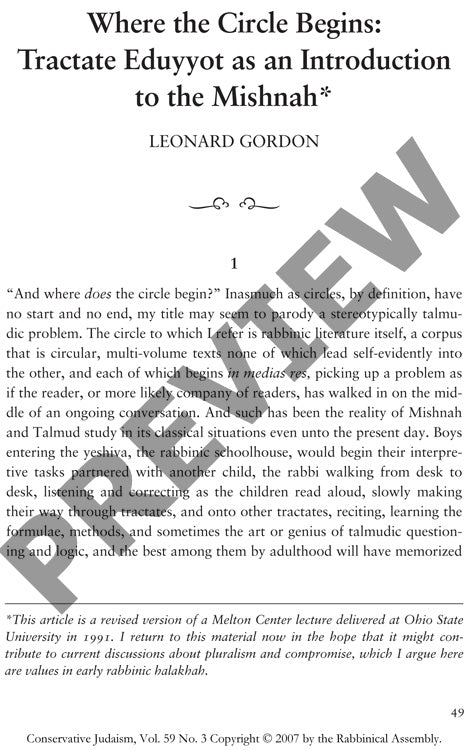Where the Circle Begins Tractate Eduyyot
Couldn't load pickup availability
How did ancient Jewish scholars prevent their community from fracturing after the Temple's destruction? The Mishnah tractate Eduyyot ("On Testimonies") reveals sophisticated mechanisms for maintaining unity through legal compromise and structured dissent. Despite its current placement at the end of the fourth division, close textual analysis of passages like Mishnah Eduyyot 1:3-6 suggests the tractate was deliberately crafted as an introduction to the entire Mishnaic corpus. Unlike other tractates organized by legal topics, Eduyyot uniquely structures itself around named authorities while offering metacommentary on Mishnaic methodology itself. The tractate systematically addresses the central challenge facing third-century rabbinic authorities: establishing principles for conflict resolution within the emerging rabbinic movement. Through examples of revered masters like Hillel and Shammai modifying their positions, continuing intermarriage between opposing schools despite legal disagreements, and the excommunication of those refusing majority rule, Eduyyot consistently promotes compromise over unbending principle. These institutional approaches to preventing schism in post-Temple Judaism make the tractate ideally suited, both chronologically and thematically, to introduce students to the Mishnah's broader concerns with legal discourse, interpretive methodology, and communal cohesion in early rabbinic Judaism.

More Information
-
Physical Description
-
Publication Information
Published 2007
ISBN
-
Publication Credits
Leonard Gordon

